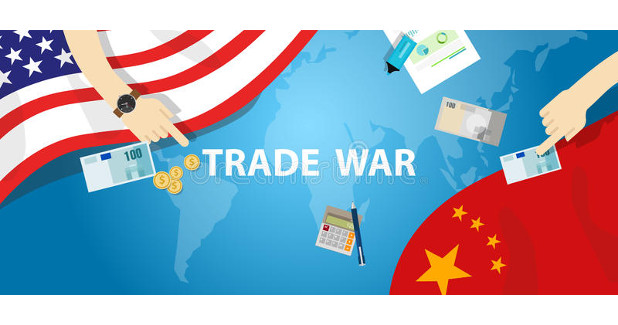
US-China trade war, a boon to Bangla
The ongoing trade war between the US and China will be beneficial for Bangladesh's garment sector as the American brands will place more work orders here to branch out their sourcing, according to a new survey.
The ongoing trade war between the US and China will be beneficial for Bangladesh’s garment sector as the American brands will place more work orders here to branch out their sourcing, according to a new survey. Respondents in the ‘2018 Fashion Industry Benchmark Study’ expressed more interest in expanding sourcing from Bangladesh in the next two years as they actively seek China alternatives. Some 75 per cent of the respondents said they will source from Bangladesh. It was 61 per cent in 2017. Nearly half of respondents expect to somewhat increase sourcing from Bangladesh through 2020, up from 32 per cent in 2017. Another 7 per cent expect to strongly increase sourcing there, a record high since 2015.
“The “Made in Bangladesh†label enjoys a prominent price advantage over many other Asian suppliers,†said the study conducted by Sheng Lu, associate professor of the department of fashion and apparel studies of the University of Delware, in collaboration with the United States Fashion Industries Association (USFIA). Like last year, respondents said Bangladesh offers the most competitive price, followed by Vietnam. Bangladesh was the fifth most preferred sourcing destination among American retailers due to price advantage, up from its previous position of seventh. However, respondents still regard “risk of compliance†as a notable weakness. The high level of media and public attention to the social responsibility problems remaining in the Bangladeshi garment industry, such as factory safety and treatment of workers, further adds to the complexity and sensitivity of the issue. Since compliance is so important to American fashion companies, concerns about the compliance risks involved in sourcing from Bangladesh could hold companies back from giving more orders to the country, the study found.
The survey was conducted in the April-May period, when talks of a trade war by the Trump Administration were high. For the second year in a row, respondents say the protectionist trade policy agenda in the US is their number one concern — up from a ranking for number 8 and 11 between 2014 and 2016. China remains the top supplier for most US fashion companies. However, China now accounts for only 11-30 per cent of companies’ total sourcing value or volume, compared with 30-50 per cent in the past, according to the study. Consistent with the official US trade statistics, China (100 per cent of the respondents) and Vietnam (96 per cent) continue to be the two most utilised sourcing destinations, followed by Indonesia (79 per cent), India (75 per cent), Bangladesh (75 per cent) and Cambodia (61 per cent).




